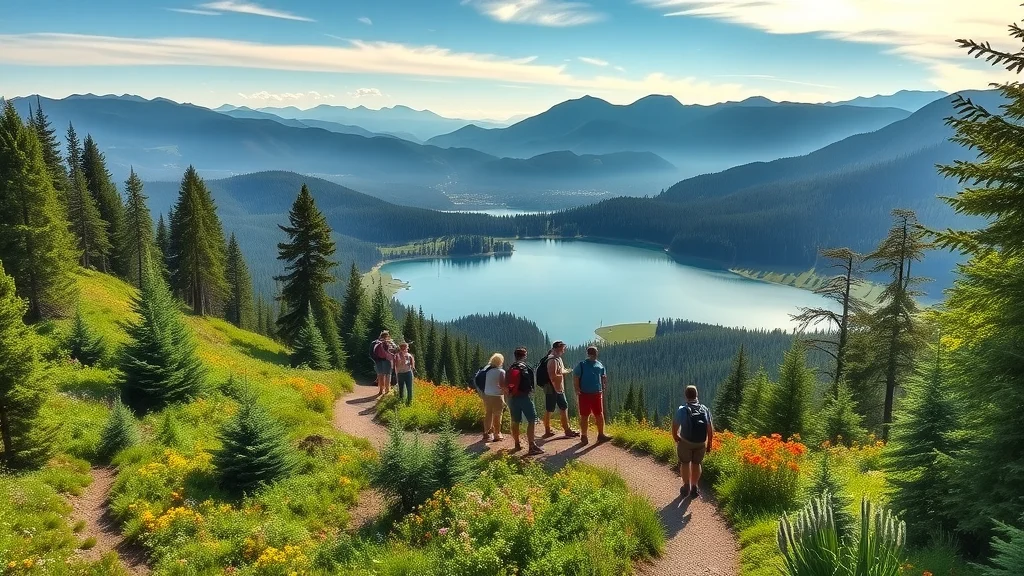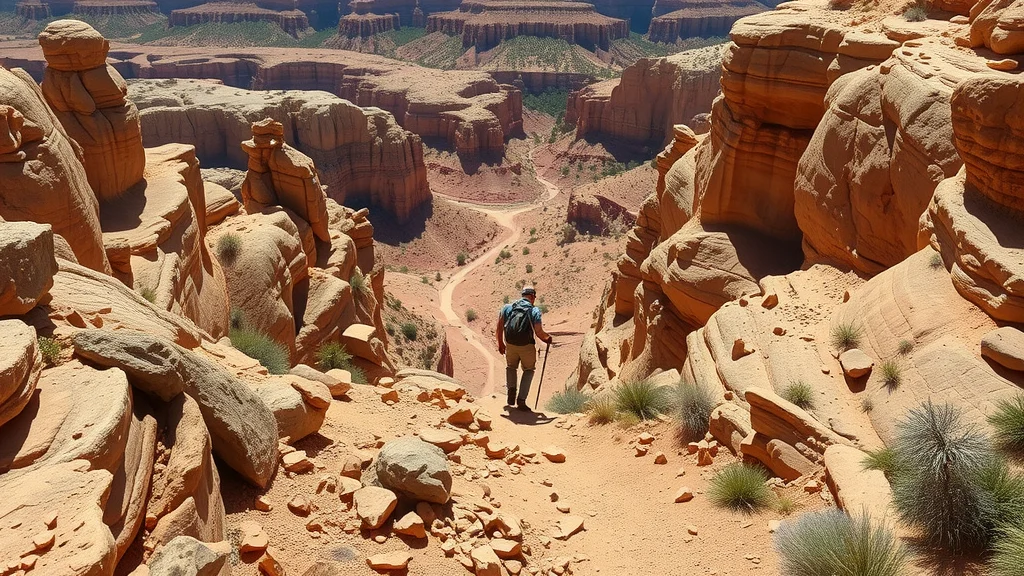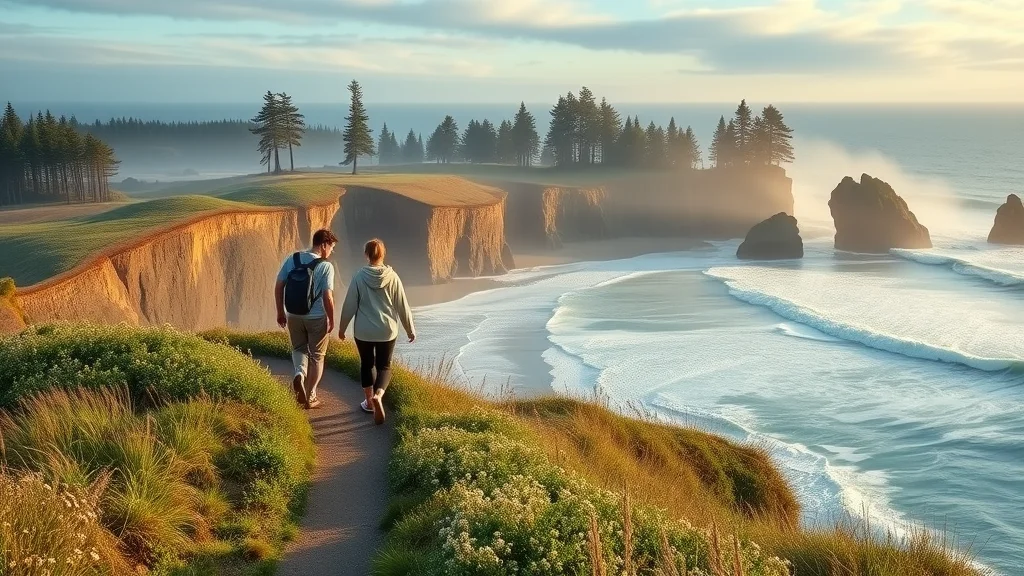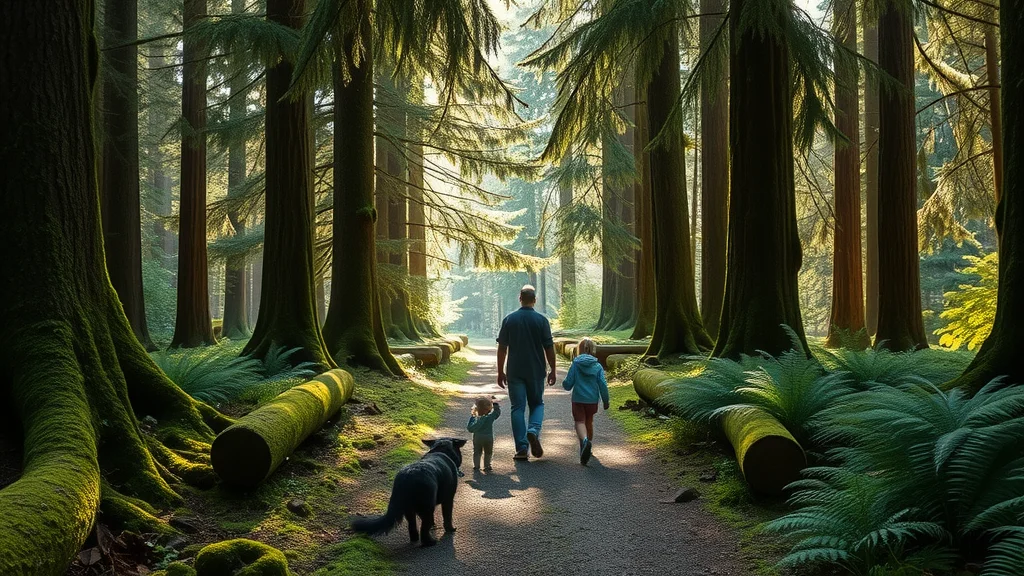Why Scenic Oregon Trails Are More Than Just Pretty Paths
Imagine stepping onto a trail where each bend reveals a fresh vista—towering rock formations, vivid wildflowers, or a mirror-bright lake shimmering in the morning sun. Oregon’s network of scenic trails draws hikers, nature-lovers, and day-trippers from around the world, promising more than mere exercise or a break from city life. For many, these paths serve as an invitation to experience the state’s diverse geology, rare wildlife, and iconic landscapes up close, creating memories that linger long after the day’s hike is over. Yet behind the breathtaking beauty, these trails tell a deeper story about Oregon’s environmental richness and the communities dedicated to preserving it.
At first glance, it might seem as though scenic trails are only for seasoned outdoor enthusiasts. In reality, these pathways are open doors to countless adventures for people of all ages and skill levels—whether you’re seeking a tranquil stroll through old-growth forest or a challenging trek along rugged ridgelines. With each step, there’s the chance not only to exercise your body but to connect with nature in its rawest form. The value of Oregon’s scenic trails runs deeper than the surface views; it’s about forging a sense of wonder for the wild places that define the Pacific Northwest and understanding why they matter, now more than ever.

Exploring the Heart of Oregon: What Makes These Trails a Must-Experience
Scenic Oregon trails are more than just routes through forests, canyons, and coastlines. They function as living museums, each offering a unique illustration of the state’s incredible variety. The trails range from gentle paths winding past salmon-rich rivers and meadows, to challenging climbs along the rim of ancient volcanic lakes. Whether you’re walking the famous Oregon Coast Trail, cycling on dedicated scenic bikeways, or discovering hidden gems in places like Succor Creek or Leslie Gulch, you’re stepping into a dynamic outdoor classroom. Every turn offers a lesson in Oregon’s unique ecosystems, local history, and the careful stewardship that sustains them.
Missing out on these trails can mean missing out on integral chapters of Oregon’s natural narrative. Without experience on these paths, visitors might overlook the subtle connections between landscapes and their inhabitants—or the effort behind keeping these spaces pristine and welcoming for all. With increasing demand for recreational opportunities, understanding where to find well-maintained and diverse trails has become even more crucial for responsible adventure-seekers. Exploring scenic Oregon trails isn’t just an outdoor activity: it’s an entry point into learning why the state remains a beacon for both casual hikers and expert conservationists alike.

How Oregon’s Scenic Trails Enrich Lives and Foster Deeper Connections
One of the most enduring strengths of Oregon’s scenic trails is how they create opportunities for meaningful personal experiences—whether it’s an awe-inspiring sunrise at a mountain overlook or the quiet companionship of birdsong along a riverside path. Trails linked to state parks like Lake Owyhee or those in the greater Succor Creek region transport visitors far from daily routines into pockets of serenity, where wildflowers bloom, geological wonders captivate, and the sheer quietude encourages reflection. For those looking to escape the ordinary, these scenic routes provide more than exercise—they become lifelines to well-being, stress relief, and mental clarity.
The benefits ripple far beyond the individual. Families often create cherished traditions along these routes, and friends discover new bonds on shared adventures. Exposure to a variety of habitats—marshlands near Elijah Bristow State Park, rugged canyons by Leslie Gulch, or the open lakeshores of Lake Owyhee—nurtures curiosity and caring for Oregon’s wild spaces. The state’s commitment to maintaining trails, offering parking permits, and providing accessible amenities further ensures these natural treasures remain inclusive and welcoming. Each outing fosters a community of responsible outdoor enthusiasts who appreciate the value of exploration and preservation, ensuring that future generations can also enjoy these shared wonders.

Seasonal Surprises: Why Every Oregon Trail Walk Feels New Again
One of the unique joys of exploring Oregon’s scenic trails is the ongoing cycle of change with each passing season. Spring hikes unveil carpets of wildflowers and migrating songbirds. By summer, cool paths beside lakes or creeks become havens on hot afternoons, while fall treats visitors to forests ablaze with color and mushroom-laden hikes that even host state-led events. Even winter beckons, with misty mornings, snow-dusted evergreens, and the quiet solitude of lesser-traveled paths. No matter how often you return, the experience rarely repeats itself—there’s always a new sound, sight, or discovery that transforms the familiar into something extraordinary.
Oregon’s extensive network of trails means that both beginners and experienced hikers can always find new paths to traverse or different habitats to explore. Trail-focused events, such as Wild Mushroom Hikes and Wetland Wanders, ensure that learning and adventure go hand-in-hand. Even for those who stick to specific regions, events and changing natural displays infuse variety and excitement into every outing. This endless renewal not only sustains the allure for regular trail-goers but also gives newcomers plenty of reasons to step out and start their own journey on Oregon’s scenic routes.

Finding Your Perfect Path: Matching Trails to Every Type of Explorer
The diversity of scenic Oregon trails ensures that there’s something special for everyone. For families and new hikers, accessible paths in places like Tryon Creek State Natural Area offer forested tranquility and educational programs, including Junior Ranger activities. Are you a wildlife enthusiast? Bird walks along the Fort to Sea Trail or wetland explorations near Elijah Bristow State Park will captivate with sightings and gentle terrain. Meanwhile, those seeking solitude or geologic drama will find it in the rocky outcrops and slot canyons of Leslie Gulch or the lakeside serenity at Lake Owyhee.
For many, the thrill comes from tackling trails linked to unique events—from mushroom-themed hikes to volunteer-led cleanups. Connecticut with a lively event calendar and community engagement, the state’s parks system both celebrates and protects its network of trails. The range of amenities—from clean, well-maintained campgrounds and cabins to guided activities—makes planning and enjoying an outing simple and enjoyable. It’s this thoughtful integration of accessibility, variety, and stewardship that sets Oregon’s trail system apart and keeps explorers returning year after year.
The Philosophy Behind Oregon’s Trail Stewardship and Visitor Experience
The approach to managing and maintaining Oregon’s scenic trails rests on a foundation of accessibility, inclusion, and lasting value. From offering both first-served camping and reservable spaces, to granting easy access through annual parking permits, the ethos is clear: everyone should have a chance to enjoy the state’s natural wonders safely and comfortably. Comprehensive guides and maps, available online or in print—including Spanish-language resources—further broaden the invitation, making sure no one is left out of the adventure.
Education forms a core principle as well. Through curated event calendars, educational hikes, and informative brochures, visitors not only enjoy the scenery but also gain practical knowledge about local ecosystems, responsible recreation, and ongoing conservation efforts. This sense of inclusion and responsibility is woven into every park experience—from the clean facilities at Lake Owyhee State Park to the helpful, knowledgeable staff who enhance each visit. The overarching philosophy is stewardship in action: fostering public appreciation today to ensure these landscapes continue to thrive for years to come.
Above all, the Oregon parks system cultivates a sense of personal ownership and respect among all visitors. By providing easy-to-follow rules, clear signage, and opportunities for volunteering, it bridges the gap between state-managed resources and community engagement. Trails aren’t just places to walk—they’re vital touchpoints for developing a lifelong love of nature, responsibility, and shared legacy.
Real Experiences: How Hikers Connect With Oregon’s Natural Beauty
For many, the most compelling endorsements of scenic Oregon trails come from those who’ve been there themselves. One visitor, Rhonda S., captures the sense of adventure and variety found in Oregon’s parks—while candidly reminding us of the importance of preparedness and respect for nature.
What can't I say. Scary drive in for someone afraid of heights or driving off the road, but if you're not driving, close your eyes because the Park is great! I love it here. It is boating and fishing and swimming paradise. If your not into water related sports, it's probably not for you. There are no real hiking trails out of the park itself but quite a few around the Succor Creek area and Leslie Gulch. The park personal are great and very helpful. The pit toilets are clean. Yes we did have an encounter with a rattlesnake but not in camp. We found one while out boating and exploring. It didn't want anything to do with us. One bad thing is there was a fair amount of dog poo on the beach. Come on people clean up after your dogs.
Stories like these demonstrate that while Oregon’s scenic trails can involve thrilling drives and the occasional wildlife sighting, they always deliver remarkable memories, connection, and discovery. With a bit of preparation and respect for the natural environment, explorers of all backgrounds will find these trails rewarding and unforgettable, no matter the season or destination.
Why Scenic Oregon Trails Continue to Transform Adventure and Conservation
It’s clear that scenic Oregon trails offer much more than a backdrop for selfies or a place to stretch your legs. These intricate pathways connect communities, preserve delicate ecosystems, and invite everyone—regardless of skill or background—to find their own version of adventure. As one of the state’s most enduring assets, Oregon’s trail system has evolved to meet the needs of present-day explorers by blending modern amenities, educational opportunities, and conservation measures.
Contributions from sites like Lake Owyhee State Park and a network of state-led programs ensure that each trail remains vibrant, accessible, and resilient. For families, individuals, and groups alike, scenic Oregon trails continue to set a standard for recreation that values both enjoyment and stewardship. Every footstep, whether on a coastal bluff or a lakeside path, becomes a part of Oregon’s ever-deepening relationship with its unique wild places.
Contact the Experts at Lake Owyhee State Park
If you’d like to learn more about how scenic Oregon trails could benefit your outdoor adventures, contact the team at Lake Owyhee State Park.
📍 Address: 1298 Owyhee Lake Rd, Adrian, OR 97901, USA
📞 Phone: +1 800-551-6949
🌐 Website: http://www.oregonstateparks.org/index.cfm
Lake Owyhee State Park Location and Hours of Operation
🕒 Hours of Operation:
📅 Monday: Open 24 hours
📅 Tuesday: Open 24 hours
📅 Wednesday: Open 24 hours
📅 Thursday: Open 24 hours
📅 Friday: Open 24 hours
📅 Saturday: Open 24 hours
📅 Sunday: Open 24 hours

 Add Row
Add Row  Add
Add 





Write A Comment